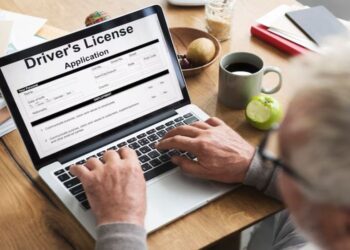Sustaining an injury due to someone else’s negligence can be a significant setback, emotionally and financially. Knowing how to make a personal injury claim is essential in these situations. This way, you can get paid back for doctor bills, lost wages, and the pain and harm the injury caused.
In busy places like New York, people often make personal injury claims. For instance, the New York State Department of Health says that about 136,913 hospital-treated injuries happen every year.
No matter where you are, the basics of the claims process are always essential. Let’s talk about the key steps you need to take after a personal injury to make it through this often challenging process.
Seek Immediate Medical Attention
Your primary focus should be your health in the immediate aftermath of an accident. Regardless of whether you feel severely injured or not, it is essential to seek medical attention promptly.
The reasons for taking this step are twofold. First, not all injuries present apparent symptoms right away. From concussions to internal bleeding, certain severe conditions might not manifest immediate symptoms, making timely medical intervention crucial for your well-being.
Secondly, getting professional medical help is very important for the legal part of your personal injury claim. The physician’s report post-evaluation is a legitimate record of injuries sustained from the incident. This medical documentation indicates that the injury directly results from the reported accident. It also supports the extent of physical harm and the likely recovery process.
If you delay or avoid seeing a doctor, claim assessors might think your injuries aren’t severe or weren’t caused by the incident, which could weaken your claim.
Therefore, on the whole, quick medical intervention ensures a clearer understanding of your health status and lays a solid foundation for a personal injury claim.
Report The Incident
File a report with the appropriate authority as soon as possible. As soon as possible, file a report with the proper authority.
- Car Accidents: In the case of a car accident, it’s crucial to report the incident to the local police immediately. They’ll document the crash scene, note any law violations, and prepare an official accident report. Remember, this step is not just for insurance purposes but can be legally mandatory, depending on the state’s law or the accident’s severity.
- Workplace Accident: If the injury occurred at your workplace, inform your employer immediately. Most states require that employee injuries be reported within a specific time frame. Submitting an official incident report to your supervisor serves a dual purpose – initiating the workers’ compensation claim process and establishing a clear record of the event.
- Other instances: Inform the manager or owner of all other accidents, such as a slip and fall at a business establishment. Request that they create a formal accident report and provide you with a copy.
The purpose of reporting is again twofold. First, it creates an official incident record, which is indispensable when filing a personal injury claim. Second, it could fulfill a legal requirement and protect you from adverse legal consequences down the line. So, being prompt and accurate with your report is a vital step towards obtaining deserved compensation.
Document Everything
Documentation plays an integral role when laying the groundwork for a successful personal injury claim. Meticulously collecting and keeping a record of all possible evidence from the scene broadens the basis of facts.
Firstly, visually documenting your immediate surroundings and the accident scene is crucial. This includes taking photos or videos from various angles, capturing the cause of the accident, possible hazards, and even weather conditions if pertinent.
Secondly, a detailed record of your injuries must be kept. This should encompass immediate harm noted at the scene and subsequent medical evaluations. It’s also beneficial to keep a personal injury diary documenting the progression of your injuries and how they impact your daily life. This could include physical discomfort, mental distress, or daily activities that you’ve been unable to perform due to the injuries.
Next, collect statements and contact information from any witnesses. Their firsthand accounts can provide an objective perspective and potentially substantiate your claims as they can detail the accident circumstances and the resulting injuries.
Financial documents are also crucial for your claim. Keep precise records of all medical expenses accrued from the accident, such as doctor visits, prescriptions, therapies, and associated travel costs. Moreover, evidence of lost earnings due to time off work is also significant. If applicable, future lost earning capacity, as stated by a professional, can additionally be included.
Lastly, any communication related to the accident, such as insurance letters, email correspondence, or notes of phone conversations, should be stored.
Find A Personal Injury Lawyer
The legal landscape of personal injury claims can be tricky and nerve-wracking. This is especially true if you aren’t familiar with the legal terminologies, court procedures, and negotiation tactics. An experienced personal injury lawyer provides valuable assistance in these situations, guiding you step by step and ensuring your rights are protected and you receive due compensation. They help calculate the damage, obtain necessary medical records, arrange required evidence, negotiate with insurance companies, and, if needed, represent you in court.
Take, for example, a scenario where a bicyclist has been hit by a car in New York City, resulting in a severe injury that requires surgery and rehabilitation. Due to the complexity of traffic laws and insurance clauses in such situations, it would be in the bicyclist’s best interests to find efficient legal representation to fight his personal injury lawsuit. How to find a lawyer?
- Referrals: Ask for recommendations from friends, family members, or colleagues with similar legal issues.
- Local Bar Association: Reach out to your local bar association. They often have referral services that connect you with lawyers specializing in personal injury law.
- Legal Aid Services: If you cannot afford a lawyer, you can contact legal aid services in your area. These organizations provide legal assistance for free or a nominal fee to low-income individuals.
- Consult Your Insurance: Reach out to your insurance company. They may have a list of preferred lawyers vetted and may come at a reduced rate if used through the insurer’s program.
- Legal Directories: Check online platforms like Lawrina Match, which cater specifically to connecting clients with specialized lawyers based on the area of law, locality, experience, and user reviews.
Imagine, in this scenario, a bicyclist decided to go with a legal directory to find a list of New York personal injury lawyers. As mentioned, Lawrina Match is one of the convenient and user-friendly platforms designed to simplify searching for and selecting skilled personal injury lawyers based on specific needs. It connects victims of accidents with qualified personal injury lawyers within their locality, providing a curated selection based on the lawyer’s area of expertise, experience, and user reviews.
File Your Personal Injury Claim
Securing legal representation is the next crucial phase: filing your personal injury claim. Legal complexities can often make this process overwhelming for an individual without any background in law. Your lawyer will be instrumental in guiding you through this labyrinth of legal protocols.
The filing starts with preparing a complaint or “pleading,” outlining your case against the defendant (the party you allege is responsible for your injury). This document typically includes details about the incident, the resulting injury, the legal basis for the defendant’s liability, and a statement of the damages (financial compensation) you seek.
Your lawyer also ensures the lawsuit is accurately filled out and adheres to the legal requirements for a successful claim. This includes adherence to New York’s statute of limitations, a law limiting the time you are allowed to bring a lawsuit. In most cases, this time limit is three years from the date of the accident; this means that the claim must be filed within this timeframe.
Negotiate A Settlement
Most personal injury cases in New York and around the country are often resolved through settlement negotiations rather than a full-fledged trial. The aim is to reach a mutually agreeable resolution that adequately covers the damages incurred from the injury.
This step involves your lawyer conducting in-depth negotiations with the at-fault party’s insurance company. During this phase, your attorney’s experience and negotiating prowess can truly make a difference. They will use their knowledge of the law and the evidence compiled to argue for a settlement that fully covers not only your immediate medical expenses and lost wages but also future medical costs, lost earning capacity, and non-economic damages such as pain and suffering.
To ensure the negotiations are successful, your lawyer may need to present a solid case underlining the negligence of the at-fault party and detailing the impact of your injuries on your quality of life. This may encapsulate medical records, expert testimony, eyewitness accounts, and any proof reflecting your own level of pain and distress.
Bear in mind, however, that the insurance companies are incentivized to minimize the payout. They may contest the extent of your injuries, claim contributory negligence, or use other legal strategies. That’s why having skilled legal representation is crucial — they’ll anticipate and counter such tactics.
Remember, quick and strategic action is pivotal after sustaining a personal injury. By taking the steps mentioned above and securing competent legal representation, such as experienced personal injury lawyers, you substantially enhance your chances of obtaining well-deserved compensation.










